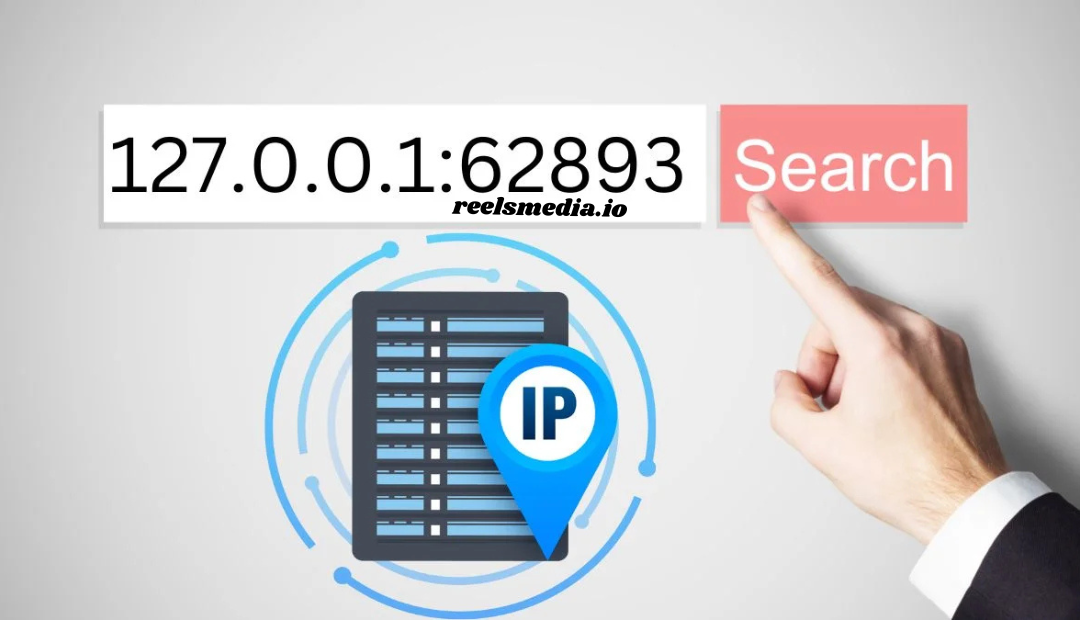When I first explored 127.0.0.1:62893, I realized how this local loopback address simplifies networking, testing, and development. Working on software projects and debugging tasks often brings this IP to life, connecting my local machine through temporary communication on a dynamic port. The localhost setup lets me simulate real applications and servers without external dependency, creating a smooth development environment where everything stays secure, fast, and internal.
What Is 127.0.0.1:62893?
The localhost or loopback address 127.0.0.1 works as a bridge between the system and itself, ensuring that all network communication remains internal and no external network involvement occurs. The port 62893 acts as a communication endpoint between processes, using a dynamic port number automatically assigned by the operating system. I’ve often seen this ephemeral range—between 49152–65535—in action while testing small applications, running a web server, or hosting an API endpoint on the same device.
Applications and Benefits of 127.0.0.1:62893
In web development, I usually start my Node.js, Apache, or Nginx projects by binding them to localhost using port 62893, like node server.js running at http://127.0.0.1:62893. This method keeps my database testing for MySQL, PostgreSQL, or MongoDB secure within the local system. When using ngrok or SSH tunneling tools, I notice the same dynamic port assignment supports secure testing, debugging, and offline development. The biggest benefits I’ve experienced are speed, isolation, and port flexibility, which reduce latency and prevent port conflicts while ensuring stable debugging support during the build process.
How to Use 127.0.0.1:62893
To test services, I access http://127.0.0.1:62893 in a web browser or check server responses using curl on the command line. Tools like netstat, findstr, or lsof help me identify which application uses a certain port. When configuring a Node.js HTTP server, I simply define const port = 62893 and watch it respond instantly. During development, frameworks like Flask, Django, React, and .NET automatically assign local servers to ports such as 62893 for faster iteration. Using wget or a small Bash script, I can verify whether the server response matches expected output, ensuring that all local communication works correctly.
Common Issues and Troubleshooting
I’ve encountered EADDRINUSE errors when another process already occupies the same address, which I resolve by ending it via netstat or task manager. Sometimes, a firewall might block access to 127.0.0.1, especially during debugging or network testing, but allowing local traffic usually fixes it. Other times, a service not running or a permission denied message signals that my user privileges are insufficient. In rare cases, connection refused, timeout, or 404 errors appear due to missing resources or DNS misconfigurations in the host file, and restarting the service often restores proper localhost resolution.
Best Practices for Using 127.0.0.1:62893
When using 127.0.0.1:62893, I always reserve ports above 49152 for temporary testing and document which applications use which ports. For security, I enable secure access for sensitive local services and maintain debugging logs for better monitoring. I recommend automating tasks using cURL or Postman to streamline testing, minimize human errors, and ensure all local server operations run smoothly within a protected development environment.
How to Get Your Computer’s IP Address
On Windows, I open CMD, type ipconfig, and hit Enter to view my IP configuration. On Linux, I use Ctrl + Alt + T and the same command. If the Apache server page doesn’t display after these steps, restarting the server helps refresh the network setup and confirm proper IP detection. These simple checks save me time and make sure my computer IP communicates correctly with 127.0.0.1:62893 when testing locally.
FAQs
Can my browser make HTTP requests locally if I am not connected to a network?
Yes, it can. Your browser sends HTTP requests to 127.0.0.1 using local communication without requiring the internet. This makes offline testing possible and helps me simulate network requests inside my own system.
What is the difference between localhost and IPv6 Addresses?
The localhost address 127.0.0.1 belongs to IPv4, while ::1 represents IPv6. Both ensure loopback communication, but IPv6 offers advanced protocol efficiency and better networking flexibility when managing local environments.
Can I block websites using loopback addresses?
Yes, by editing the hosts file and mapping unwanted domains to 127.0.0.1, you can block websites effectively. This technique works well for DNS mapping, local network control, and domain redirection during security tests.
System restore fixed proxy virus 127.0.0.1:62893?
Indeed, performing a system restore can remove malware, proxy virus, or other network issues affecting port errors. I’ve used it myself to clean up corrupt configurations and restore a stable Windows environment when debugging became inconsistent.
